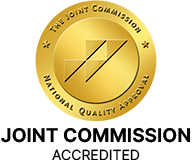Drug Testing for Drug and Alcohol Addiction
Drug testing has become an invaluable tool in the battle against drug and alcohol addiction. Its primary aim is to identify individuals using illicit substances, monitor treatment compliance, and promote personal accountability. With advances in testing methods, accuracy, and understanding the dynamics of substance misuse, drug testing is helping to build safer communities, workplaces, and homes.
Table of Contents
Why is Drug Testing Important?
- Safety: Many accidents in workplaces, schools, and on roads are caused by substance impairment. Drug testing ensures that employees or individuals are not under the influence, thus safeguarding others around them.
- Treatment Verification: For individuals undergoing rehabilitation, regular drug testing can confirm if they are staying compliant with their treatment programs.
- Legal Proceedings: Drug testing is often required in legal settings such as custody battles, probation, or parole to ensure that individuals are compliant with court orders.
- Deterrence: Just the mere knowledge of routine drug tests can deter individuals from using illicit substances.
Common Methods of Drug Testing
- Urine Tests: This is the most common method due to its convenience and ability to detect substance use from the past few days to weeks, depending on the drug.
- Saliva Tests: These detect drug use within a short window, usually 24 to 48 hours. They are non-invasive and can be administered anywhere.
- Hair Tests: Drugs can be detected in hair for up to 90 days after consumption. However, they don’t typically detect recent drug use from the past week.
- Blood Tests: These are the most accurate but also the most invasive. They detect the presence of the drug itself rather than its metabolites.
- Breath Tests: Specifically for alcohol detection, breathalyzers measure blood alcohol concentration from a breath sample.
Challenges of Drug Testing
- Evading Detection: As drug testing methodologies evolve, so do the methods to evade detection, such as the use of synthetic urine or detoxification products.
- Privacy Concerns: Many argue that random drug testing, especially in workplaces or schools, invades personal privacy.
- Accuracy: False positives, although rare, can have severe consequences for the individual. Consuming certain foods or medications can sometimes trigger a false positive result.
The Future of Drug Testing
With the rise in the legalization of certain substances, like cannabis, and the emergence of new synthetic drugs, there’s an ongoing need to update drug testing methods. Innovations are being made to improve accuracy, reduce invasion of privacy, and cater to the ever-evolving landscape of substance use.
Furthermore, drug tests of the future might focus on impairment testing. Instead of merely detecting the presence of a drug, tests might determine if an individual is actually impaired by it. This approach can be more fair and relevant, especially concerning substances that remain detectable long after their impairing effects have worn off.
Conclusion
Drug testing plays a critical role in addressing and mitigating the challenges of drug and alcohol addiction. By ensuring safety, verifying treatment adherence, and deterring drug use, these tests are an essential tool in both professional and personal settings. As with any tool, ethical considerations and accuracy are paramount, and as society’s relationship with drugs continues to evolve, so will the methods and philosophies behind drug testing.
Related Articles:
Published on: 2023-05-31
Updated on: 2025-01-01



